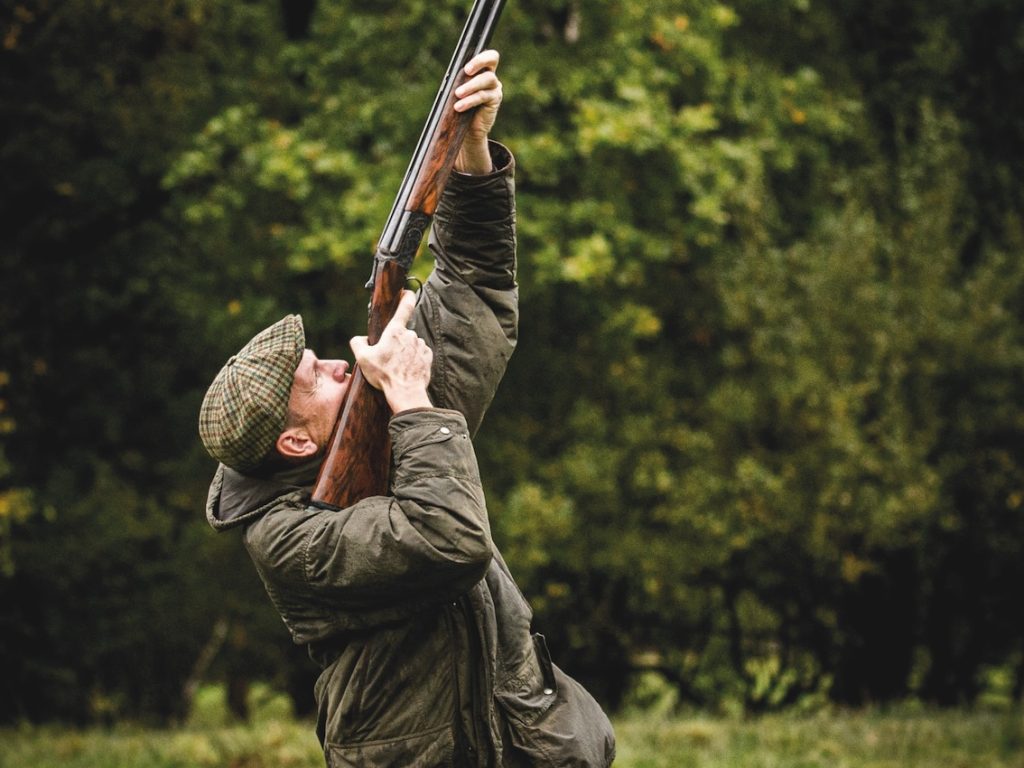Win CENS ProFlex DX5 earplugs worth £1,149 – enter here
Why the spring is the peak time for foxing
<strong>How to take action against these predators</strong>
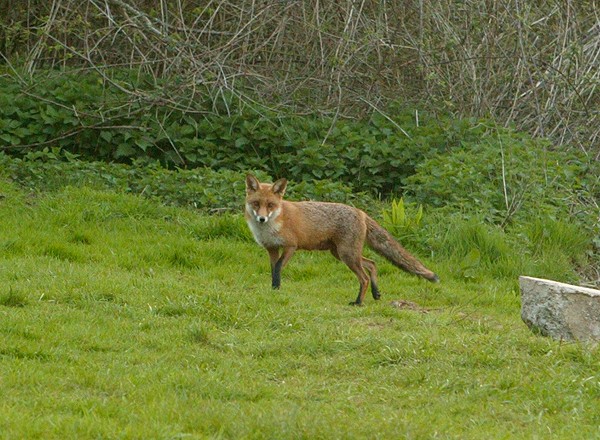
Springtime is fox time
The majority of fox cubs are born in March. Excellent timing by nature because the fox then benefits from the boost in breeding habits of prey mammals and birds. In spring eggs, brooding hens and tiny, defenceless youngsters are major prey for the fox, who will also search for young rabbits and voles when available.
Fox cubs
For the first two weeks after the cubs are born, the vixen supplies them with warmth and milk. She licks their derrières to stimulate their bowel movements, and then promptly eats the faeces. Food is brought to the entrance of the earth by other foxes so she does not need to hunt. If she had to leave her cubs for any length of time the loss of her heat and attention would decrease their chances of survival. Also, if she returned covered in dew or rain, the raised humidity would be even more detrimental because pneumonia is one of the biggest killers of small cubs.
The cubs grow fast; soon the vixen will be out as well, adding to all the food that the other adults are providing. One or more dogs may be present, as DNA tests have shown that many litters have more than one father. Other non-breeding females in the home territory often contribute to the commissariat. In eight weeks, the cubs will have grown from an average of 100g at birth to 2kg. In another month they will look like small adults and be starting to hunt for themselves. Springtime is fox time indeed.
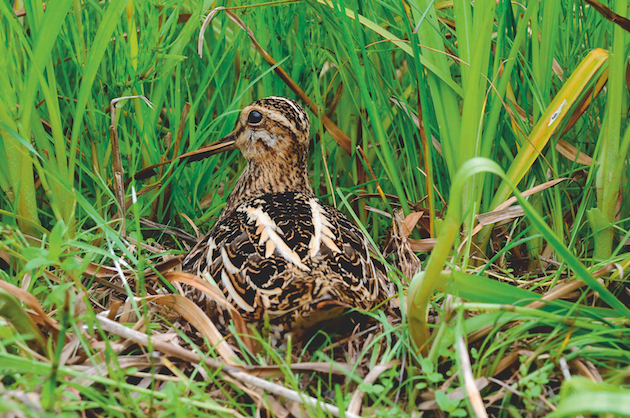
Ground nesting birds are at risk from foxes in springtime
Conservation
Cubs need the best food, and plenty of it, which is why predation is so high at this time of year. Gamekeepers who would like to harvest a sporting surplus are thought of as the main fox killers, but those wishing to preserve rare or vulnerable species, especially of groundnesting birds, also have a need to kill foxes.
Springtime is fox time for the RSPB and other wildlife societies too, who often have to kill foxes. There is an annual battle to keep bitterns at Minsmere reserve, in Suffolk, safe. Other species, such as ground-nesting hen harriers, are also vulnerable to fox predation. RSPB surveillance cameras often show why breeding success on some of the Society’s grounds is low, as they have filmed foxes wading into the nestlings. Not every RSPB warden is allowed to kill, which often negates the whole purpose of the reserves.
Obviously it is best if vixens can be killed before they drop their cubs. There is one advantage to delaying, however, as the presence of cubs draws adults to the earth. The stable territories of the early spring allow for killing a minimum number of foxes and provides the best protection for an area. Only the occasional itinerant will need to be dealt with, as will a vixen with cubs if she moves in from a neighbouring area. Hopefully by the time the migration of the new season’s foxes starts in July or August, their quarry will have fledged and flown.
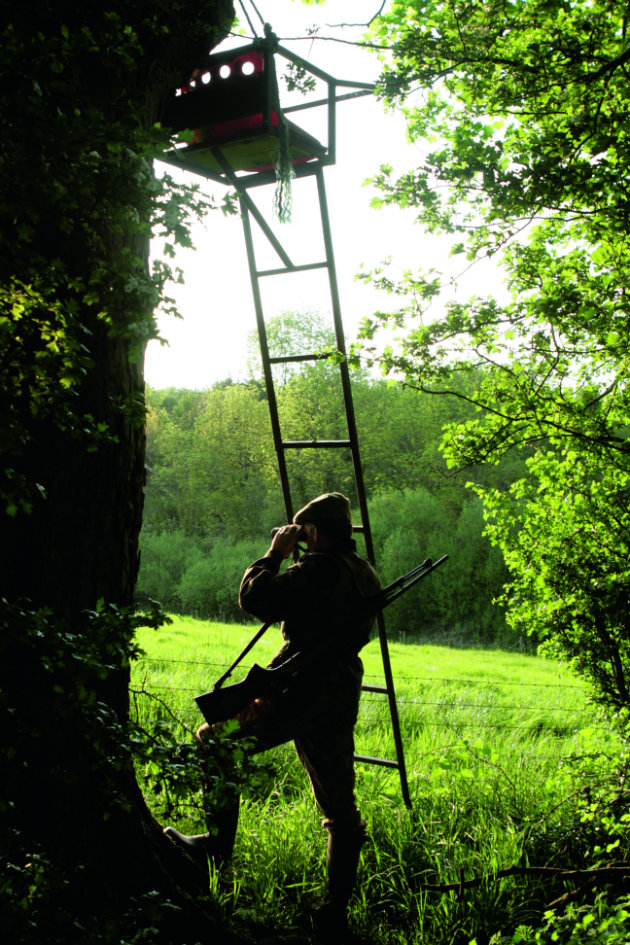
A high seat is useful if a fox earth is surrounded by high crops and will keep scent away from the fox
Finding an earth
Finding an earth is not easy when a vixen has new cubs, as there are few signs. Perhaps you have seen a fox moving in with a mouthful of food, which gives the game away. Don’t use a dog to check the hole, as disturbed vixens quickly move their litters. If she and the cubs are killed as soon as you have spotted them, the chance for a clean sweep of all the other adults in the area will be lost. When the cubs are five weeks or older they start to emerge to play around the earth. Soon there is so much flattened vegetation and debris from their meals that it is impossible to miss one. If found, the decision has to be made as to how to deal with the residents with the least cruelty.
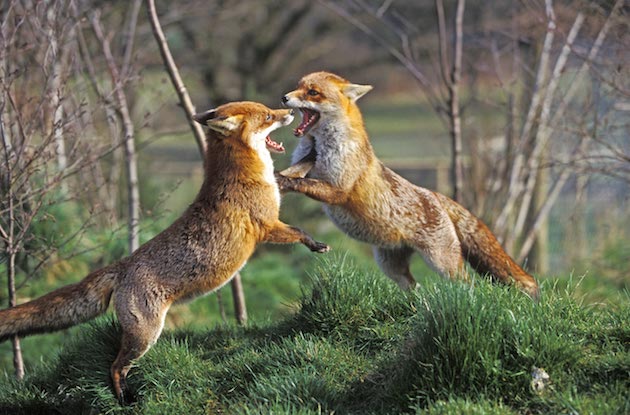
Foxes play fighting
Humane treatment
Each situation has to be carefully weighed up before any action is taken and there are plenty of potential side effects. Killing a lactating vixen without knowing where the cubs are is not a good start, for if they cannot yet eat meat they will starve to death. Often, if the vixen is killed when the cubs are bigger, other foxes will continue to feed them. If the other adults are killed and only the pregnant vixen is left, she will be forced to go hunting earlier than usual, and this may cause some cubs to die from neglect.
If you have found a litter, the simplest way to deal with the lot is to act when they are a few weeks old and all the attendant adults are working hard to bring in food. A high seat can be placed across the wind within easy rifle range. This can be occupied during daylight as the adults work all hours to keep up the supply of food. I often find that the earliest hours of the day or the middle of a sunny afternoon are the most productive periods. At 100- to 150-yard ranges, any decent Shot with a centrefire rifle shouldn’t miss. I use a .223 Remington, with 69-gr Sierra bullets. I stop the foxes with a little mouse squeak from my lips and aim at the biggest part of the front end. Never rush in to gather the slain; it’s better to leave them as it lessens the risk of the vixen moving the cubs on. If you shoot a dog and the lactating vixen, be careful. I have heard of no less than three dogs being shot while bringing food to the same earth. You also want to shoot any barren vixens present. If you have shot the vixen, but believe there may be more adults about, the litter can be anchored by feeding them a few dead rabbits or similar. This will keep them going until you are sure you have no more adults about.
Fox calling
The most effective calls to use near an earth are those with cub sounds. An electronic one of cubs “geckering” works best with a vixen. Use it very sparingly and be ready, as her head can come out of the surrounding cover almost anywhere.
Once the adults are dead, the cubs must be quickly dealt with. Cubs can be shot if you have the time to wait for them to leave the earth. Otherwise, I have found that a trap set in the mouth of the earth, using a small amount of bait, will capture them quickly.
Cleaning foxes out of an area at this time of year is not sport. Springtime is fox time but culling should be humane, fast and efficient to give anything you are trying to protect its best chance.
This article was originally published in 2012 and has been updated
Related Articles
Get the latest news delivered direct to your door
Subscribe to Shooting Times & Country
Discover the ultimate companion for field sports enthusiasts with Shooting Times & Country Magazine, the UK’s leading weekly publication that has been at the forefront of shooting culture since 1882. Subscribers gain access to expert tips, comprehensive gear reviews, seasonal advice and a vibrant community of like-minded shooters.
Save on shop price when you subscribe with weekly issues featuring in-depth articles on gundog training, exclusive member offers and access to the digital back issue library. A Shooting Times & Country subscription is more than a magazine, don’t just read about the countryside; immerse yourself in its most authoritative and engaging publication.







